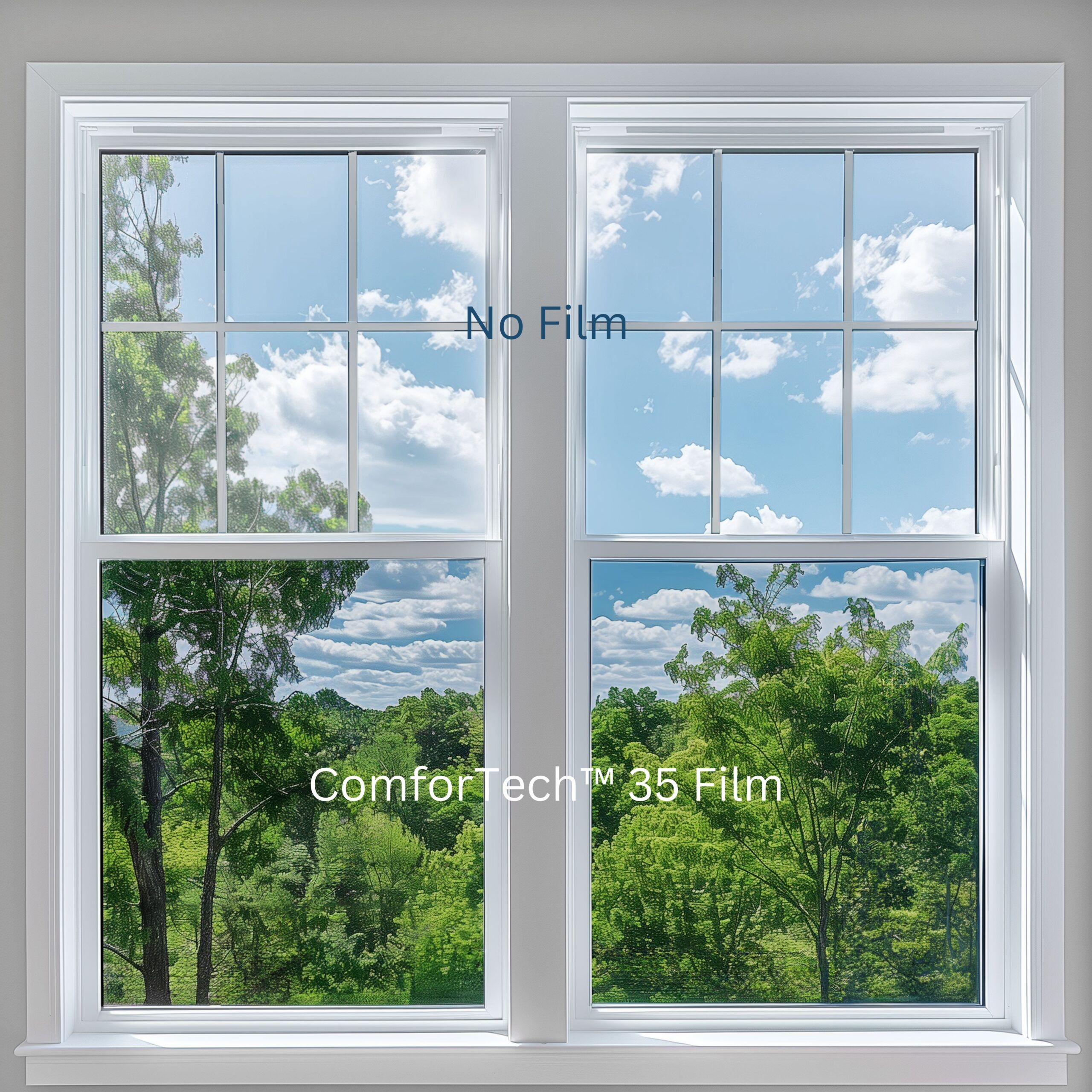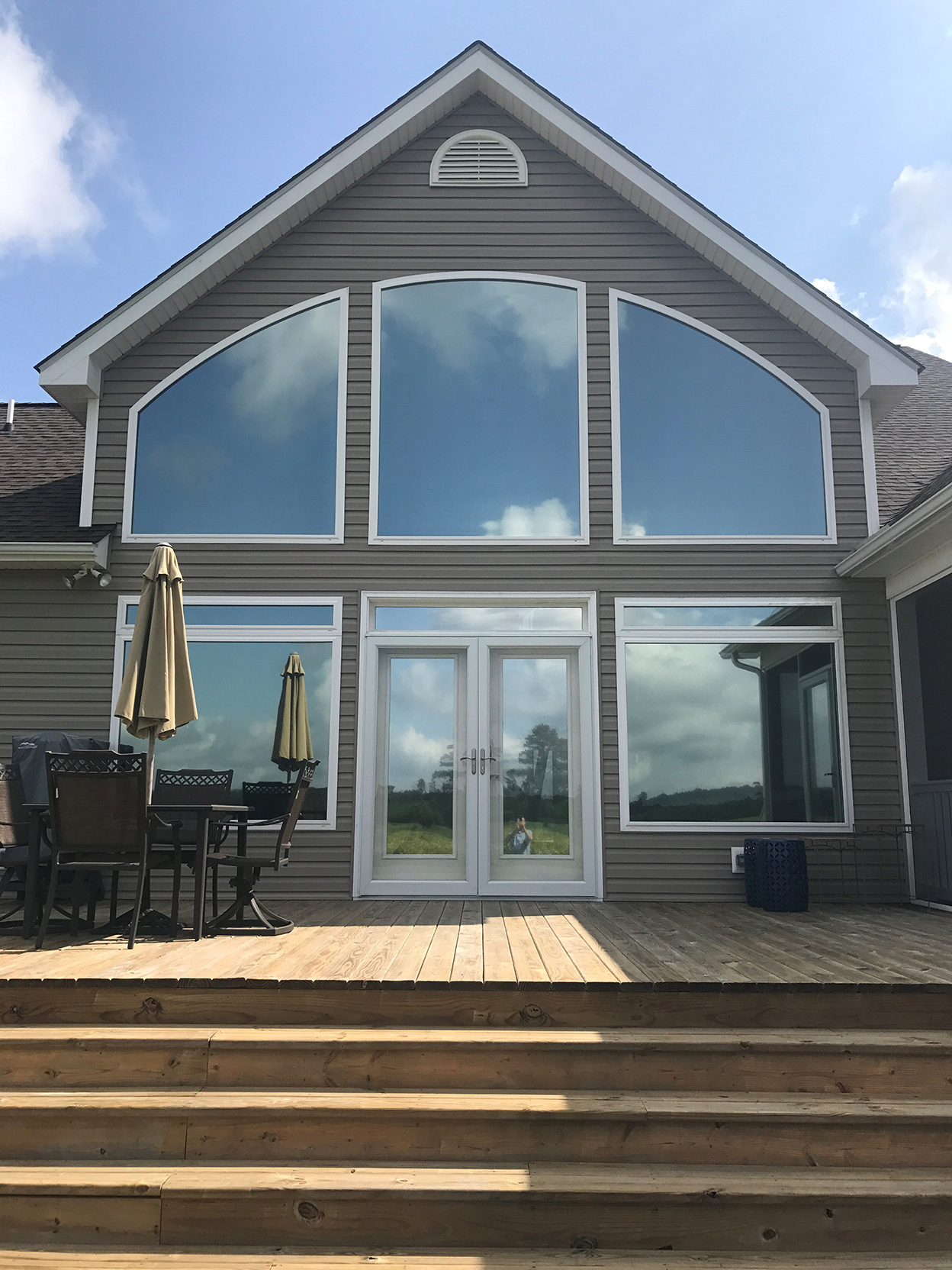Upgrade Your Home with Expert Residential Window Tint Providers
Upgrade Your Home with Expert Residential Window Tint Providers
Blog Article
How Residential Home Window Tinting Improves Your Home's Energy Effectiveness
Residential window tinting provides a compelling solution for property owners looking for to improve energy performance within their living rooms. By using specialized films to home windows, it efficiently decreases heat transfer, thereby supporting indoor temperature levels and decreasing the demand for extreme home heating or cooling. This not only cuts power usage yet likewise supplies a much more comfortable setting by minimizing glow. Nonetheless, comprehending the nuances of how tinting works and picking the ideal kind for your home can be critical. Curiously, what elements should one think about prior to making this financial investment?
Understanding Window Tinting
Recognizing home window tinting is important for property owners seeking to boost both convenience and energy performance in their living areas. Residential Window Tint. Window tinting involves the application of a slim movie to the interior or exterior surface of glass windows. This movie can substantially modulate the quantity of sunlight and warmth that gets in a home, hence influencing interior climate conditions
There are numerous types of window tinting films readily available, each with distinctive residential or commercial properties. The effectiveness of home window tinting is usually measured by its Visible Light Transmission (VLT) percentage, which shows how much light can pass via the film.
Advantages of Energy Effectiveness
Home window tinting not only boosts looks yet additionally plays a substantial duty in boosting energy efficiency within household rooms. By reducing warmth transfer via windows, colored films produce a more stable interior climate, which can result in considerable reductions in power usage for heating and air conditioning. This power performance translates right into lower utility bills, supplying property owners with significant long-term financial savings.

In addition, window tinting enhances the convenience of living areas. By reducing glare and obstructing damaging UV rays, tinted windows develop an even more pleasant atmosphere, which can bring about improved wellness for owners. The protection against UV rays also aids maintain furniture and flooring from fading, adding to the longevity of home things.
How Tinting Works
Tinting films run with a mix of innovative materials and innovations created to control the amount of solar power getting in a home. Mainly composed of polyester, these movies typically integrate metal or ceramic fragments that soak up and mirror heat. This double ability permits them to substantially lower the penetration of ultraviolet (UV) rays and infrared radiation while permitting visible light to travel through.
The efficiency of home window tinting is measured by its solar warmth gain coefficient (SHGC), which suggests exactly how much solar energy is sent through the window. Lower SHGC values are better as they signify higher warmth rejection. In addition, home window tints can feature a selection of shades, enabling property owners to personalize their visual preferences while improving energy efficiency.
Moreover, these movies act as an obstacle, protecting against heat loss throughout colder months by reflecting indoor heat back into the space. This thermal insulation effect enhances the air conditioning advantages acquired during warmer months, contributing to a well balanced indoor climate year-round. By managing solar energy effectively, residential window tinting not just enhances comfort but additionally plays a vital role in lowering energy usage and lowering energy expenses.
Picking the Right Tint

There are various types of home window movies offered, including colored, metalized, and ceramic. Colored films are cost-effective but may have limited durability. Metalized films supply far better heat denial but can disrupt electronic signals. Ceramic movies offer superb warm control without jeopardizing presence and are very durable, making them a prominent option.
Noticeable light transmission (VLT) is one more critical element, as it suggests the amount of natural light that can travel through the colored glass. Home owners ought to pick a color with a VLT that enhances their lighting choices while still providing ample glare reduction.
Additionally, assessing the solar warm gain coefficient (SHGC) can assist determine how well a tint can block warm from sunlight. A reduced SHGC indicates better warmth control, inevitably boosting energy effectiveness.
Installation and Maintenance Tips
Proper installation and upkeep are important elements in making the most of the benefits of domestic home window tinting. To achieve optimum outcomes, it is recommended to hire a qualified specialist for installment. This makes sure that the color is used properly, preventing air bubbles, creases, or misalignment that can compromise efficiency. Experts additionally utilize specialized techniques and tools, which can enhance the durability and efficiency of the color.
Complying with installation, maintenance is important to lengthen the life of the home window movie. It is recommended to wait at least 30 days prior to cleansing the colored windows to permit the sticky to cure fully.
Dealing with these concerns quickly can protect against further damages and preserve energy effectiveness. By adhering to these installation and upkeep ideas, homeowners can guarantee their window tinting continues to provide substantial energy financial savings and comfort for years to come.
Conclusion
In final thought, household home window tinting functions as an effective remedy for enhancing energy effectiveness within homes. By minimizing heat transfer and obstructing hazardous UV rays, window films contribute to decrease power usage and improved indoor convenience. The choice of ideal tinting materials, together with appropriate setup and upkeep, even more makes important link the most of these benefits. Inevitably, home window tinting represents a lasting investment that not just decreases energy costs yet likewise promotes a comfy living atmosphere throughout the year.
Home window tinting entails the application Check Out Your URL of a thin film to the inside or exterior surface of glass home windows. By reducing heat transfer with windows, tinted movies develop a more steady interior climate, which can lead to substantial decreases in power intake for home heating and cooling.The efficiency of home window tinting is gauged by its solar warm gain coefficient (SHGC), which indicates exactly how much solar power is transmitted through the window. By managing solar energy efficiently, property home window tinting not only improves convenience yet additionally plays a vital role in decreasing energy usage and reducing utility expenses.
By minimizing warm transfer and obstructing unsafe UV rays, Learn More Here home window movies add to decrease power intake and boosted interior convenience.
Report this page